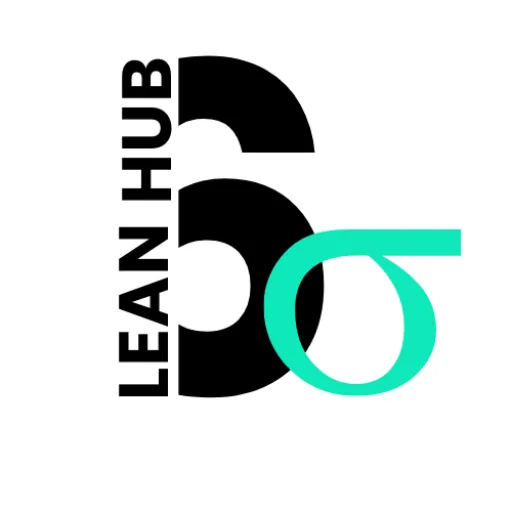Navigating Change: Current vs. Future State Mapping
In today’s fast-paced world, organizations are constantly faced with the need to adapt and evolve. Change mapping serves as a crucial tool in navigating this landscape, allowing us to visualize the journey from our current state to a desired future state. By systematically outlining the steps involved in this transition, we can better understand the complexities of change and the various factors that influence it.
This process not only helps us identify potential obstacles but also enables us to strategize effectively, ensuring that we remain aligned with our overarching goals. Moreover, change mapping fosters a culture of transparency and collaboration within our teams. When we engage in this process, we create a shared understanding of the changes ahead, which can significantly enhance buy-in from all stakeholders.
By involving everyone in the mapping process, we empower our colleagues to contribute their insights and perspectives, ultimately leading to a more comprehensive and effective change strategy. This collective approach not only mitigates resistance but also cultivates a sense of ownership among team members, making them more invested in the success of the change initiative.
Key Takeaways
- Change mapping is important for organizations to understand the impact and scope of change within their operations.
- Identifying the current state helps in recognizing the areas that need improvement and change within the organization.
- Envisioning the future state allows organizations to set clear goals and objectives for the desired outcome of the change.
- Mapping the transition plan helps in creating a roadmap for implementing the necessary changes within the organization.
- Overcoming resistance to change is crucial for successful implementation, and requires effective communication and leadership.
Identifying the Current State
Before embarking on any change initiative, it is essential for us to conduct a thorough assessment of our current state. This involves gathering data and insights about our existing processes, systems, and organizational culture. By taking stock of where we currently stand, we can identify strengths that we can leverage and weaknesses that need addressing.
This assessment serves as the foundation for our change mapping efforts, providing us with a clear baseline from which to measure progress. In this phase, we should engage in open dialogues with team members across various levels of the organization. Their firsthand experiences and observations can offer invaluable insights into the current state.
We can utilize surveys, interviews, and focus groups to gather diverse perspectives, ensuring that we capture a holistic view of our organization. By doing so, we not only gain a deeper understanding of our existing challenges but also uncover opportunities for improvement that may have previously gone unnoticed.
Envisioning the Future State
Once we have a clear understanding of our current state, the next step is to envision our future state.
This is where we articulate our aspirations and define what success looks like for our organization.
By creating a vivid picture of our desired outcomes, we can inspire and motivate our teams to embrace the changes ahead.
It is essential for us to be specific about our goals, as this clarity will guide our decision-making throughout the change process. In envisioning the future state, we should consider various dimensions such as organizational structure, culture, processes, and technology. What do we want our workplace to look like?
How do we want our teams to collaborate? By answering these questions, we can create a compelling vision that resonates with all stakeholders. Additionally, involving team members in this visioning process can foster a sense of shared purpose and commitment, making it easier for us to rally support for the changes we wish to implement.
Mapping the Transition Plan
| Transition Plan Metrics | Q1 | Q2 | Q3 | Q4 |
|---|---|---|---|---|
| Number of Stakeholders Engaged | 25 | 30 | 35 | 40 |
| Percentage of Transition Plan Completed | 20% | 40% | 60% | 100% |
| Number of Training Sessions Conducted | 5 | 8 | 10 | 12 |
| Percentage of Budget Utilized | 15% | 30% | 60% | 100% |
With a clear vision in place, we can now begin mapping out our transition plan. This involves outlining the specific steps and actions required to move from our current state to our envisioned future state. We must break down the change process into manageable phases, identifying key milestones along the way.
This structured approach not only helps us stay organized but also allows us to track progress effectively. As we develop our transition plan, it is crucial for us to consider potential risks and challenges that may arise during implementation. By anticipating these obstacles, we can devise strategies to mitigate them proactively.
Additionally, assigning roles and responsibilities within our teams will ensure accountability and clarity throughout the process. By creating a detailed roadmap for change, we position ourselves for success and increase the likelihood of achieving our desired outcomes.
Overcoming Resistance to Change
Resistance to change is a natural human response that we must acknowledge and address as we embark on our change journey. It is essential for us to recognize that fear of the unknown and concerns about job security can lead to apprehension among team members. To overcome this resistance, we must foster an environment of trust and open communication.
By actively listening to concerns and addressing them transparently, we can alleviate fears and build confidence in the change process. Additionally, providing support and resources during the transition can significantly reduce resistance. We should offer training programs and workshops that equip team members with the skills they need to adapt to new processes or technologies.
By investing in their development, we demonstrate our commitment to their success and well-being. Furthermore, celebrating small wins along the way can help reinforce positive attitudes toward change, encouraging team members to embrace new ways of working.
Communicating the Change Plan
Clear Messaging Eliminates Confusion
Clear and consistent messaging helps eliminate confusion and uncertainty while fostering a sense of inclusion among team members.
Multi-Channel Communication
We should utilize various communication channels—such as emails, meetings, and internal newsletters—to reach everyone effectively. In our communication efforts, it is essential for us to articulate not only what changes are happening but also why they are necessary. By connecting the dots between our current state, envisioned future state, and the rationale behind the changes, we can create a compelling narrative that resonates with our audience.
Encouraging Feedback and Openness
, encouraging feedback and questions during this phase allows us to address concerns proactively and reinforces a culture of openness.
Implementing and Monitoring the Change
As we move into the implementation phase of our change mapping process, it is crucial for us to remain vigilant and adaptable. Change rarely unfolds exactly as planned; therefore, monitoring progress closely will enable us to identify any deviations from our roadmap early on. Regular check-ins with teams can help us gauge how well the changes are being received and whether any adjustments are needed.
We should establish key performance indicators (KPIs) that align with our goals for measuring success throughout implementation.
These metrics will provide us with valuable insights into how effectively we are progressing toward our envisioned future state.
Additionally, creating feedback loops allows team members to share their experiences and suggestions for improvement continuously.
By fostering an environment of continuous learning and adaptation, we position ourselves for long-term success.
Evaluating the Success of the Change Mapping
Finally, once we have implemented the changes, it is essential for us to evaluate their success comprehensively. This evaluation should involve assessing both quantitative metrics—such as productivity levels or employee engagement scores—and qualitative feedback from team members about their experiences during the transition. By analyzing this data holistically, we can gain valuable insights into what worked well and what areas may require further refinement.
Moreover, celebrating successes along the way reinforces positive behaviors and encourages ongoing commitment to change within our organization. We should take time to recognize individual contributions as well as collective achievements throughout this journey. By reflecting on our experiences and learning from them, we can continuously improve our change mapping processes for future initiatives, ensuring that we remain agile and responsive in an ever-evolving landscape.
In conclusion, change mapping is an invaluable tool that guides us through the complexities of organizational transformation. By understanding its importance, identifying our current state, envisioning a future state, mapping out a transition plan, overcoming resistance, communicating effectively, implementing diligently, and evaluating success thoroughly, we position ourselves for sustainable growth and success in an ever-changing world.
FAQs
What is current state mapping?
Current state mapping is a visual representation of the current processes, systems, and workflows within an organization. It helps to identify inefficiencies, bottlenecks, and areas for improvement.
What is future state mapping?
Future state mapping is a visual representation of the desired processes, systems, and workflows within an organization. It outlines the improvements and changes that need to be made to achieve a more efficient and effective state.
What is the purpose of current state mapping?
The purpose of current state mapping is to provide a clear understanding of the existing processes and identify areas for improvement. It helps to identify inefficiencies, waste, and opportunities for optimization.
What is the purpose of future state mapping?
The purpose of future state mapping is to outline the desired state of processes and systems within an organization. It helps to set goals for improvement, identify potential solutions, and create a roadmap for change.
What are the benefits of current state mapping?
The benefits of current state mapping include identifying inefficiencies, improving communication and understanding of processes, and providing a baseline for measuring improvement.
What are the benefits of future state mapping?
The benefits of future state mapping include setting clear goals for improvement, creating a vision for change, and providing a roadmap for implementing improvements.
How are current state and future state mapping used together?
Current state and future state mapping are used together to identify areas for improvement, set goals for change, and create a plan for implementing improvements. The current state provides a baseline for understanding, while the future state outlines the desired outcome.






